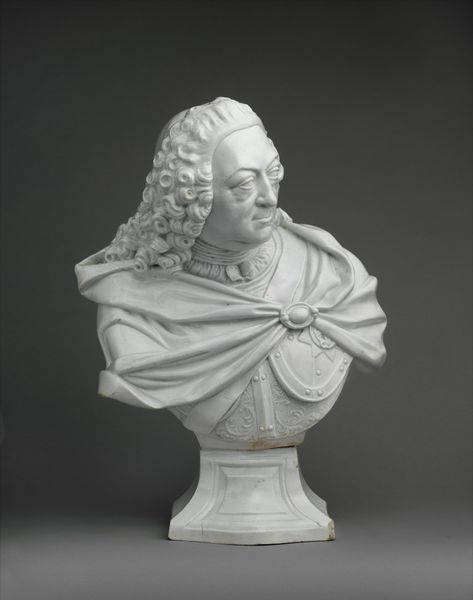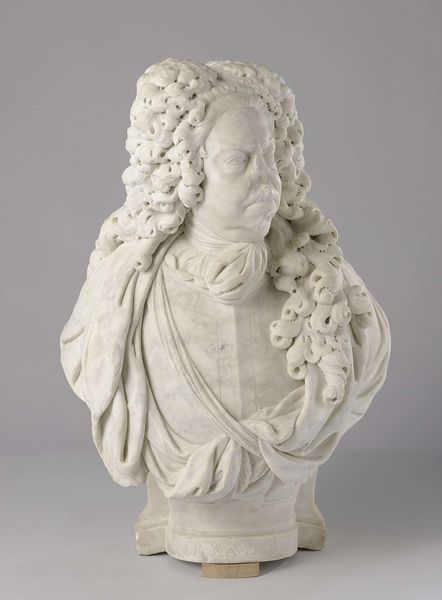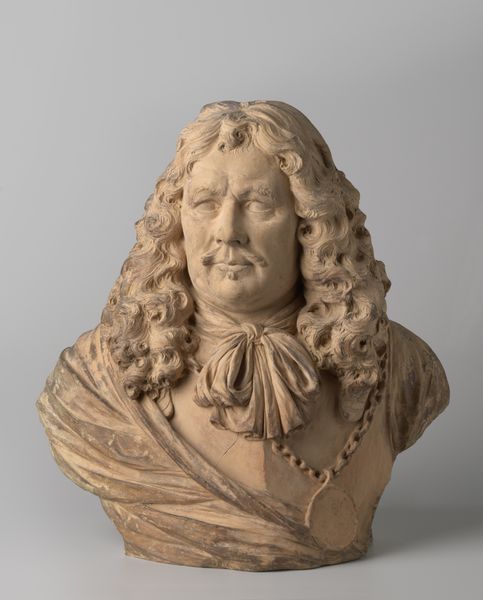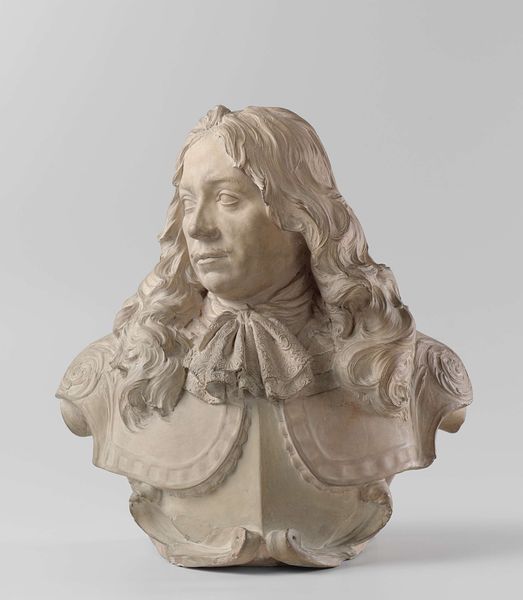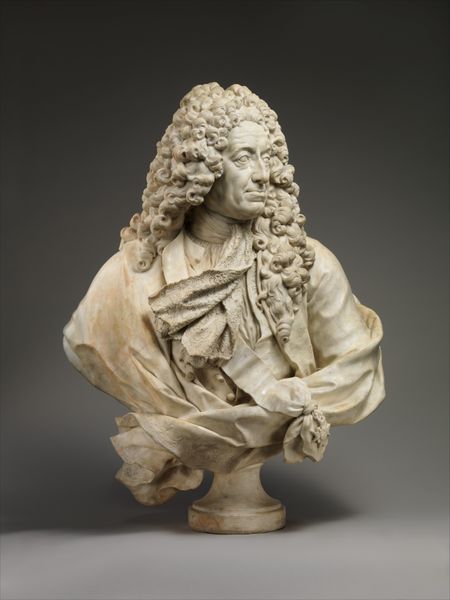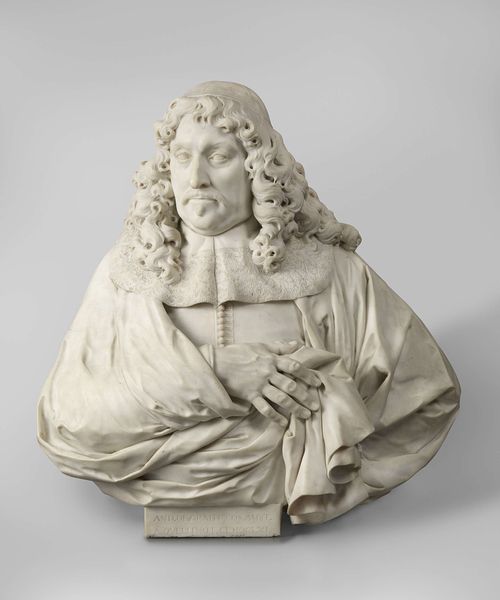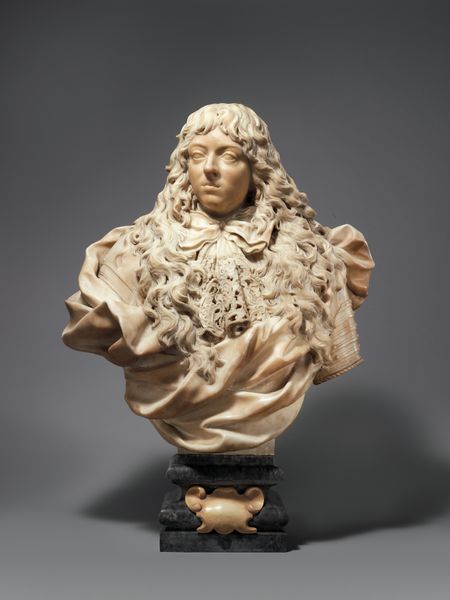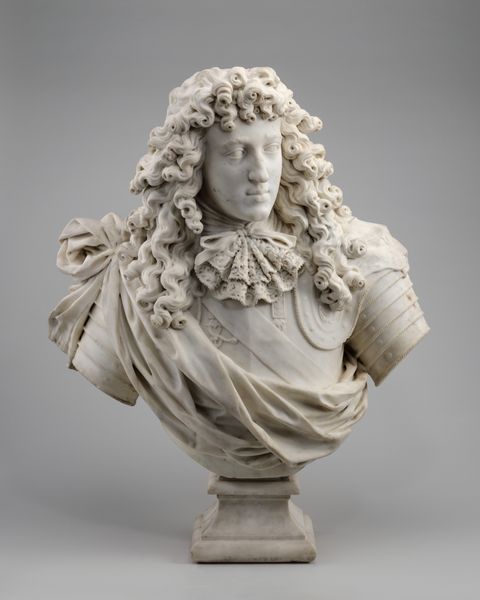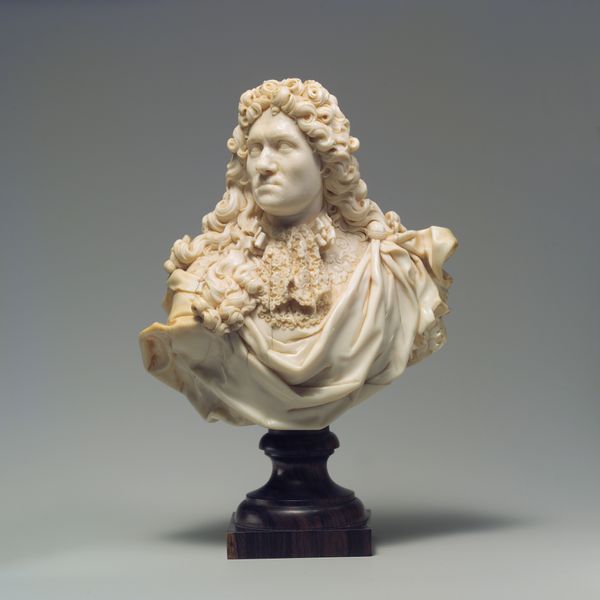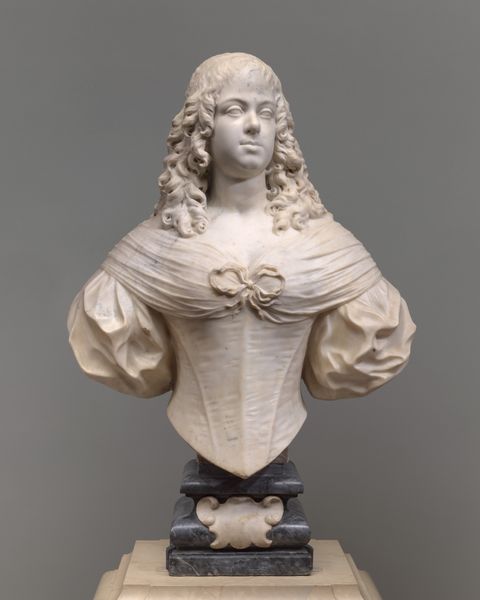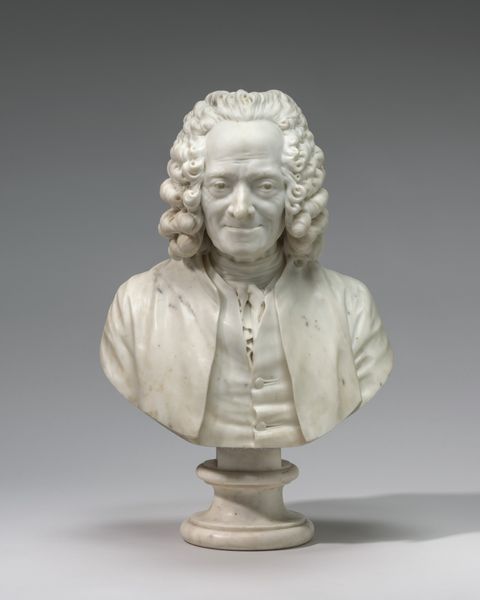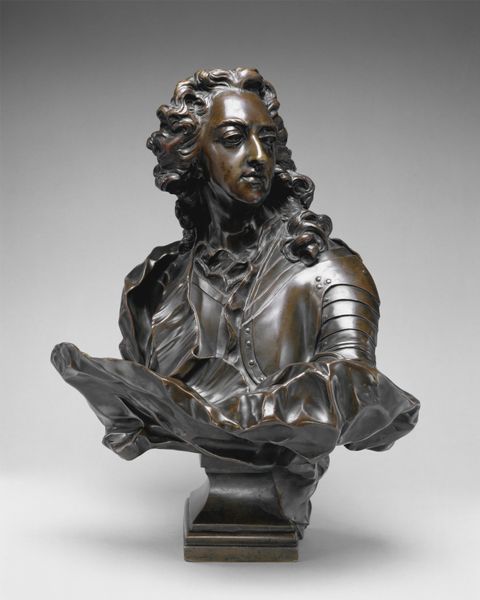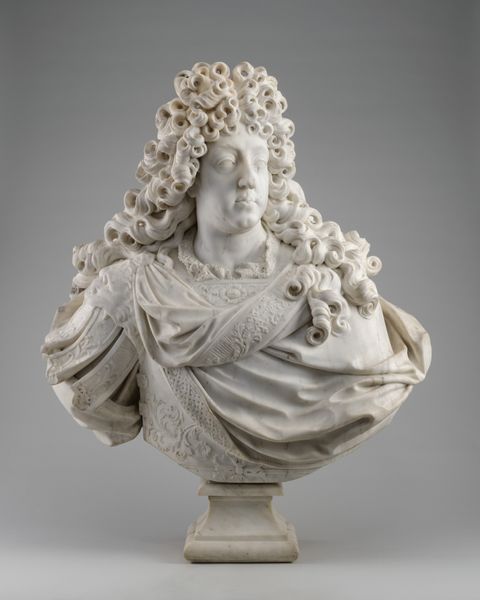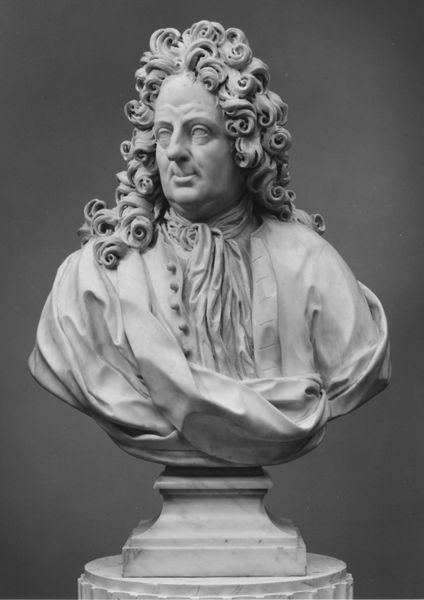
sculpture, marble
#
portrait
#
baroque
#
sculpture
#
sculpture
#
marble
Dimensions: height 80.0 cm, width 66.0 cm, depth 31.0 cm, width 36.2 cm, depth 28.5 cm
Copyright: Rijks Museum: Open Domain
Curator: This is a remarkable piece. The "Bust of Dom Luis da Cunha," sculpted in 1737 by Jan Baptist Xavery. It's a marble sculpture. Editor: It immediately strikes me as grandiose. Look at that cascade of meticulously carved curls! One almost feels the weight and density of the marble despite the delicate rendering of the subject’s features. Curator: Absolutely, the baroque style is evident in its dramatic flair and intricate detail. Xavery really captures a sense of Da Cunha's stature through the composition. Editor: Da Cunha must have had incredible influence, not just in resources available for commission but also in the labour required. The sourcing of marble itself, quarrying it, transporting it. Each stage implicates different levels of craft. Curator: True. And if we move beyond the pure representation and consider the forms, there's a wonderful balance between the textured wig and the smoother surfaces of the face and drapery. It draws your eye directly to Da Cunha’s expression—almost a studied nonchalance. Editor: Do you think it really captures anything 'real' though? It seems like more of a carefully constructed performance. How do we consider his position and power relative to Xavery's as a worker. Did Xavery find freedom within those confines, or does the bust more directly mirror Da Cunha's image of himself? Curator: That interplay between patron and artist is precisely what makes portraiture so compelling. As to the emotional expression: there is undeniable grace. Xavery masterfully portrays Da Cunha not as a man simply with power, but a man aware of his power and his position. Editor: And while some might find the piece simply ornamental, perhaps the labor imbued within speaks more to our understanding of power and production, ultimately shifting the perception from pure glorification. Curator: Indeed, the marble itself, worked to create such fine details. One gets the impression that there is perhaps as much significance as to the source and extraction of the stone, as there is the final sculptural representation. Editor: And perhaps that can teach us more about both Da Cunha and Xavery in the period through its very materiality.
Comments
rijksmuseum about 2 years ago
⋮
Da Cunha was the Portuguese ambassador in The Hague from 1728 to 1736. He then left for Paris, where he had previously served as well. This bust was completed only after Da Cunha’s departure from The Hague. As an expert on contemporary French art, Da Cunha was probably the most influential of Prince William IV’s artistic advisors.
Join the conversation
Join millions of artists and users on Artera today and experience the ultimate creative platform.
